
This blockbuster focuses on American theoretical physicist J. Robert Oppenheimer's role in leading the effort during World War II to design, build and successfully test an atomic bomb.
The development of the bomb was a milestone in history and science. And the most celebrated, sought-after, and readily available material reminder of that era is a greenish, quartz-based glass called trinitite.
FISSION AND FUSION
Trinitite was created at 5:29 a.m. on July 16, 1945, when a plutonium-implosion fission device was detonated at Trinity Site in the New Mexico desert north of Alamogordo-an event unforgettably portrayed in the Oppenheimer movie. With a TNT-equivalent energy yield of 125 kilotons, the blast's 3000°F temperatures completely vaporized the 100-foot-tall, steel detonation tower.
Two months later, Time magazine described Trinity Site's ground zero as a shallow, 2,400-foot-wide blast crater that appeared as "a lake of green jade."
The abundant, jade-like material that imparted a greenish color to the crater floor was initially named everything from "atomsite" and "a-bombite" to "Alamogordo glass," but the name that stuck was "trinitite." Scientists first assumed that trinitite was created when the heat of detonation fused the desert sand. But according to current theory, the greenish glass formed when sand was drawn up into the atomic fireball where it fused before falling in small, molten blobs to solidify on the desert floor.
TRINITITE
Classified as a man-made glass of indefinite composition and amorphous structure, trinitite consists mainly of quartz with lesser amounts of feldspar, hornblende and pyroxene minerals-the same basic composition as the original sand.
This story is from the {{IssueName}} edition of {{MagazineName}}.
Start your 7-day Magzter GOLD free trial to access thousands of curated premium stories, and 9,000+ magazines and newspapers.
Already a subscriber ? Sign In
This story is from the {{IssueName}} edition of {{MagazineName}}.
Start your 7-day Magzter GOLD free trial to access thousands of curated premium stories, and 9,000+ magazines and newspapers.
Already a subscriber? Sign In
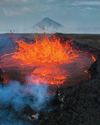
THE BRIGHT SIDE OF VOLCANIC ROCK
As a mineral resource, volcanic rock is decidedly short on glamour.
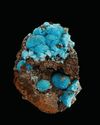
The Other Copper Minerals
12 Lesser-known Collectible Species

MINERAL COLLECTING -AND ROCK & GEM
Evolving Together FOR 54 YEARS
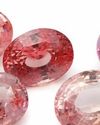
Gemstone Trends
A Look Back at 2024 & What to Expect in 2025
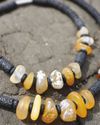
How to Make a GEM BEAD NECKLACE
No Lapidary Experience Needed!
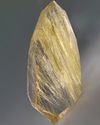
Framing Nature's Art
Faceting Rutilated Quartz for Beginners
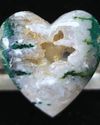
BEDAZZLED BLUE SEAM AGATE
More than several centuries ago, mining was the profession most often seen as befitting of men.
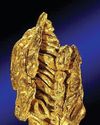
ROCK & GEM FIELD GUIDE:
Spinel is a captivating gemstone with a rich history of being mistaken for gems like ruby and sapphire.
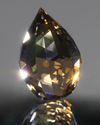
SNAKE SCALE DROP 1.5:1
This Faceting Focus is revisiting the briolette gemstone design because of its popularity with independent and hobby gemstone faceters.
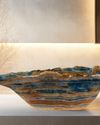
STONE CHIC
How Earth-Inspired Decor Brings Comfort to our Home